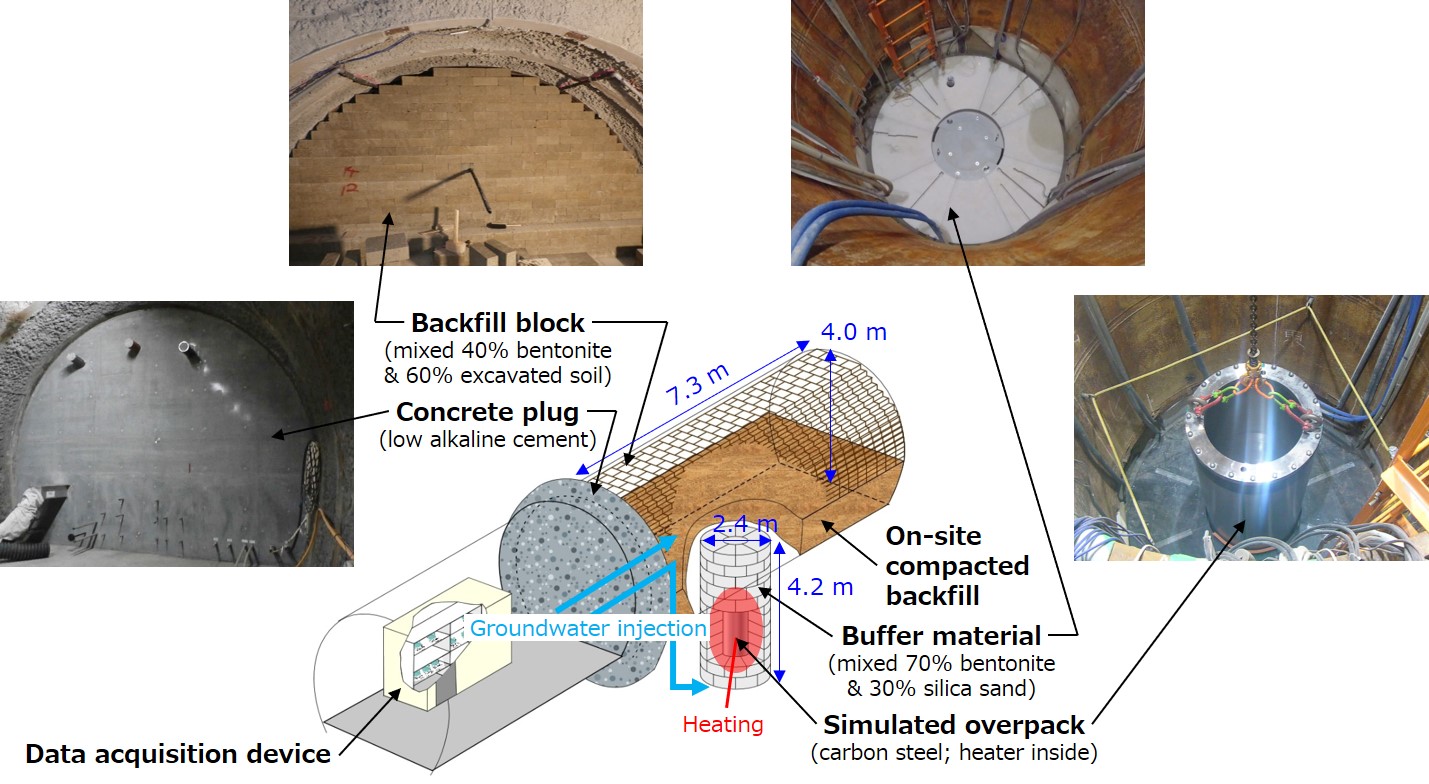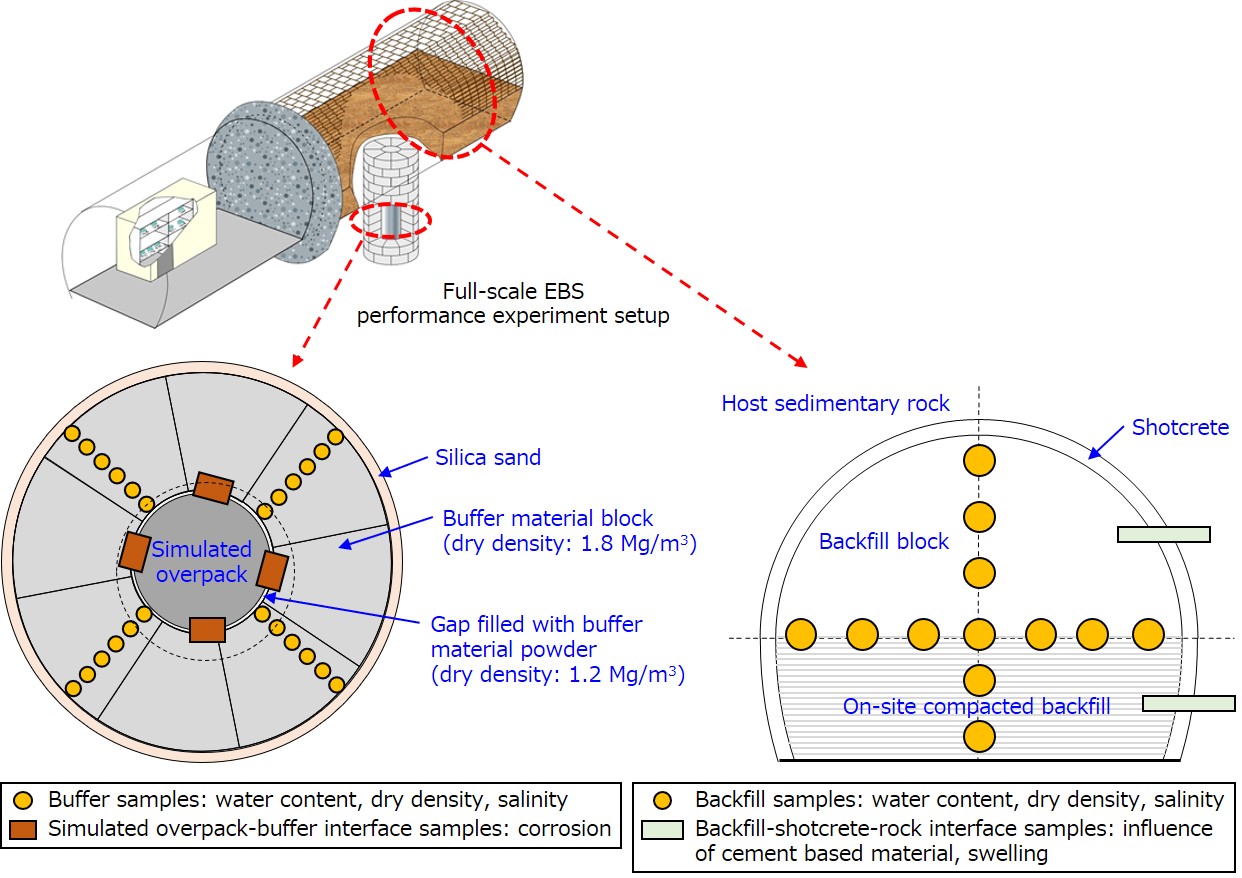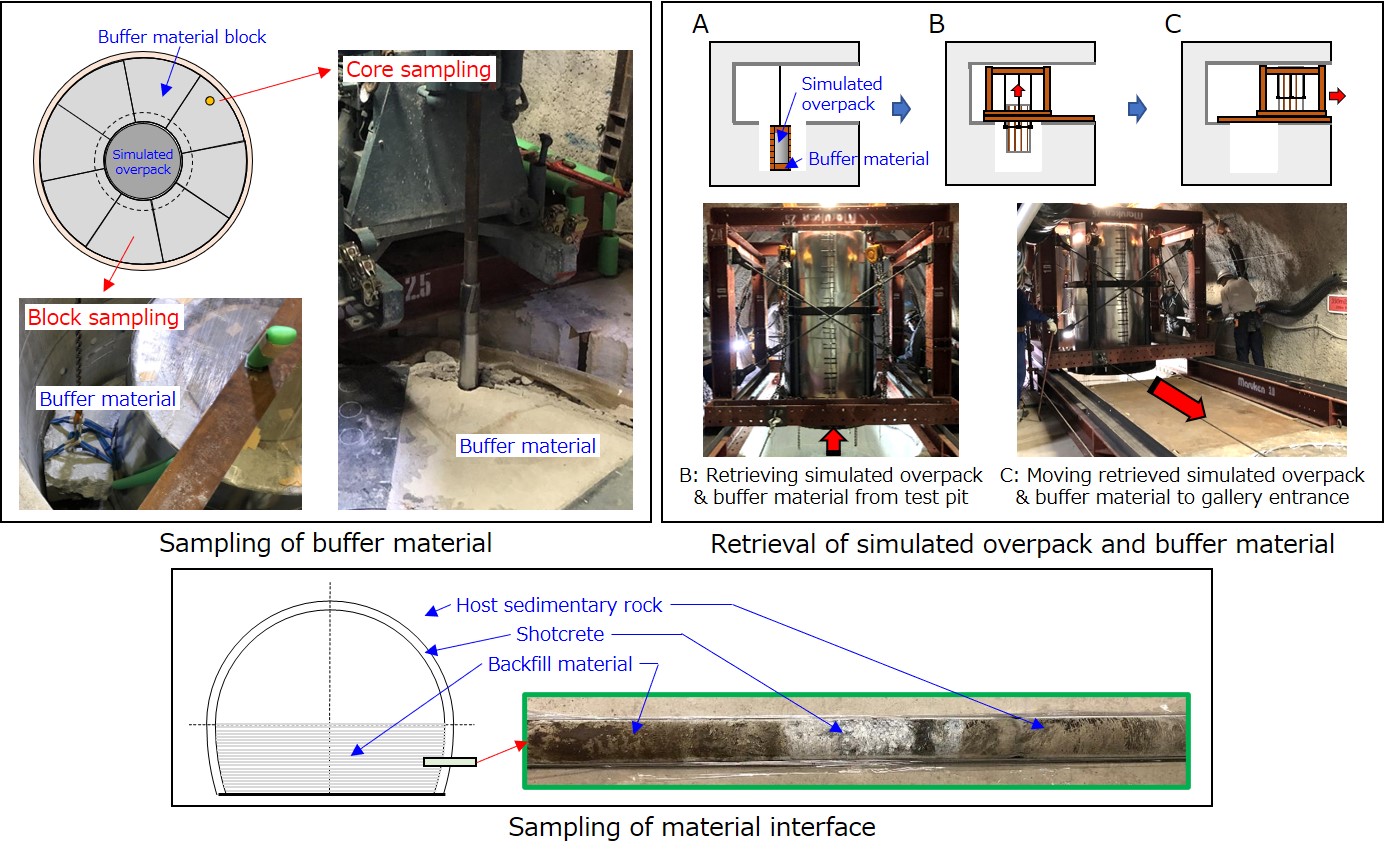Task C: Full-scale EBS dismantling experiment
Introduction
It is of importance to evaluate the evolution of near-field thermal-hydrological-mechanical-chemical (T-H-M-C) conditions over time during the transition period following the emplacement of waste forms. This is because such information would allow the near-field initial conditions to be defined for safety assessments and the overpack lifetime to be predicted. To this end, the full-scale engineered barrier system (EBS) performance experiment for vertical EBS emplacement has been carried out at the 350 m Gallery since 2014, with the aims of understanding the T-H-M-C coupled processes and testing the T-H-M-C coupled simulation code during backfilling the EBS and tunnel and its subsequent dismantling. The relevant data have been obtained by the previously installed sensors. However, as those only from the sensors would not allow the conditions and processes occurring at the interfaces of the different EBS materials to be understood in detail, the experimental setup is dismantled to acquire more detailed information.
The main aim of this task is to test the T-H-M-C coupled simulation code in a rigorous manner by understanding the near-field T-H-M-C coupled processes in more detail.

Subtasks
- C-1: Data acquisition before dismantling
- The acquisition of data relevant to evaluating the near-field T-H-M-C behaviour is continued in the ongoing full-scale EBS performance experiment.
- C-2: Elaboration of dismantling experiment plan
- The dismantling experiment plan is elaborated by specifying the data to be captured during dismantling the experimental setup for testing the T-H-M-C coupled simulation code.
- C-3: Preparation of simulation code
- A T-H-M-C coupled simulation code is developed and the required parameters are specified. Information on individual codes is shared to recognise the differences between them.
- C-4: Predictive modelling
- The evolution of the near-field T-H-M-C conditions is predicted using the developed simulation codes and the specified parameters. Predictive modelling results are compared between different codes to identify the conceptual uncertainties involved.
- C-5: Dismantling of experimental setup
- During dismantling the experimental setup, a series of samples are taken as previously defined from the different EBS materials and the host sedimentary rock and then analysed to obtain the relevant data.
- C-6: Testing and updating of simulation code
- A comparison between the predictions and the observations is made to assess the predictive capability of the simulation code. All the testing results are then compared between different codes to specify the major conceptual uncertainties and assess their impacts on the simulation for further code refinement.


